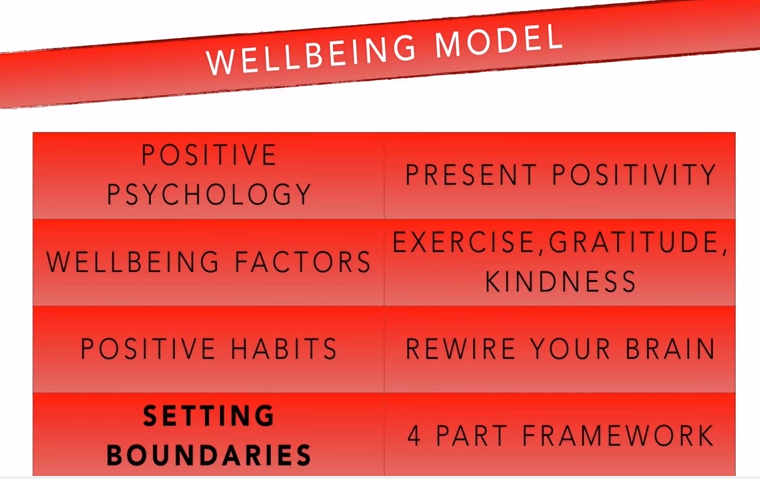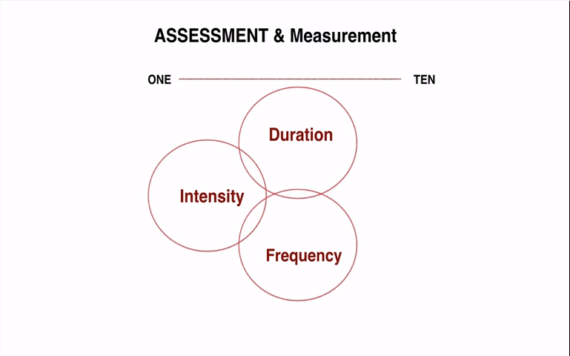In the wellbeing module of the Accidental Counsellor Training, we talked about several things like positive psychology, about being positive in the present, well-being factors, and positive habits on how to rewire your brain. What I actually want to talk about is setting boundaries.
I have a four part framework for you. The first thing that we need to do is we need to make an assessment of where the person’s at. We’re not doing a clinical therapy assessment, but we do need to assess – What’s going on? How do we refer? Is this something that I deal with myself or is it something that I can work with also?
Lets just pretend someone you’re dealing with is someone who is highly stressed or anxious. When they come in, he or she might say, “You know I’m really stressed and I’m really anxious.” Your response would be, “Okay help me understand. You’re stressed and anxious but ONE of a scale of ONE to TEN is, “it’s not bothering you as much?”, “You’re coping, okay.” TEN, is stressed and anxious, and you’re not okay. “It’s really really hard, you’re not coping at all. Help me understand better give me a number of where you are at.” If they give you a high number 7, 8, 9,10, that tells you immediately that this is really a difficult situation for them. You want to ask how long this has been going on for?
That’s a very important distinction to make because when we find out how intense the problem is, and we start working with the person and supporting them, we need to see that there’s improvement.
If there’s an 8 on that scale, we need to see quickly within the next week or two that they are going from 8 to a 6, they are actually going backwards. That there is a reduction an improvement. They’re coping better. This is what I like doing, I like asking questions about the intensity. “How difficult is it for you?” Then I want to say to them, “When this stress and this anxiety comes about, how long does that last, the duration?”, “Does it last for ten minutes, for an hour, for half a day?”, “How frequent does it occur?”, “Does it happen daily?”, “Does it happen once a month?”.
These are really good indicators about the severity of the problem. It gives you some good information about whether you should be referring immediately or it might be something that you’re comfortable dealing with.



